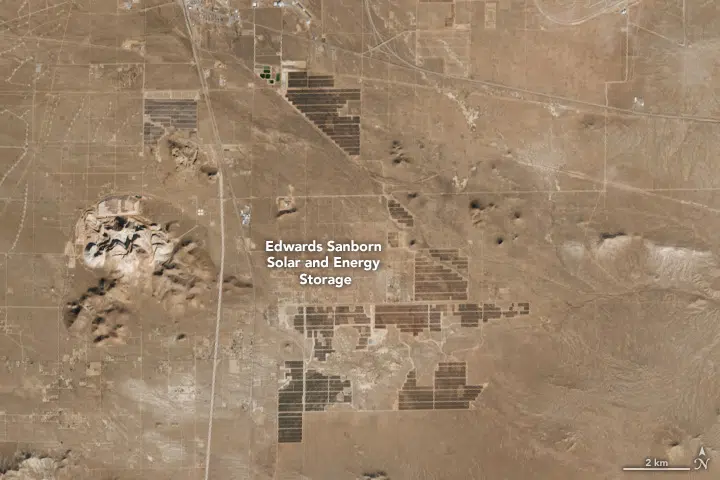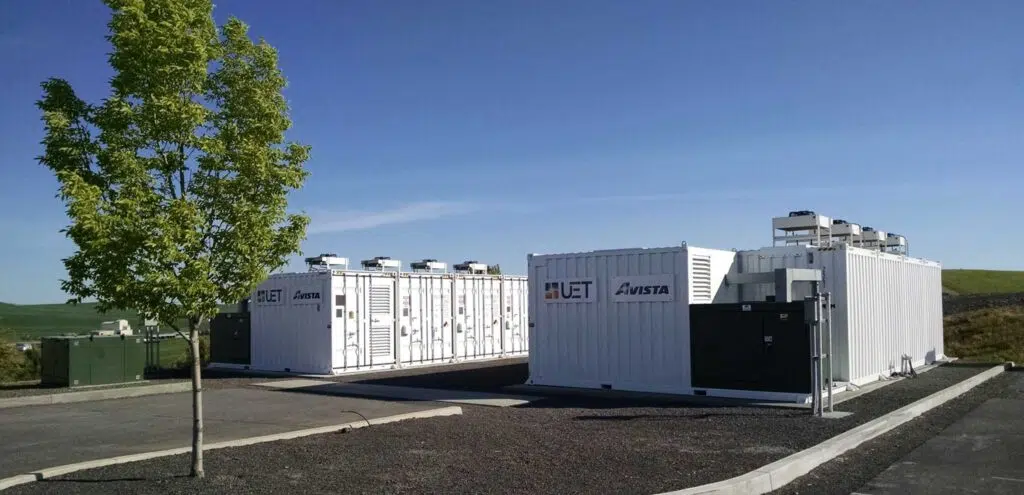Why solar lighting is best for BESS
Here’s something worth celebrating: In 2022, renewable energy sources overtook coal in electricity generation for the very first time in the United States. The previous year, renewables surpassed nuclear power generation. By 2050, the International Energy Agency (IEA) predicts that renewables will account for 44% of electricity production in the U.S., with solar being responsible for more than half of that share.  This is undoubtedly positive news, but there’s still a major hurdle to overcome. Unlike traditional fossil fuels, many renewable energy sources—such as wind and solar—are intermittent and unpredictable. This means that energy needs to be captured and stored for times when the sun isn’t shining or the wind isn’t blowing.  If you’re thinking about batteries when you hear the words 'energy' and 'storage,' you’re absolutely correct! Lithium-ion batteries, in particular, play a critical role in integrating renewables into the grid while simultaneously helping to reduce overall grid stress. Over the past few years, the use of these batteries has skyrocketed thanks to the rise of Battery Energy Storage Systems (BESS). These large-scale facilities can span up to 4,600 acres and store as much as 3,300 megawatt-hours (MWh) of energy.  Given their vast size, remote locations, and eco-friendly nature, BESS facilities are prime candidates for solar-powered solutions. In this article, we’ll explore the current and future state of BESS technology, the challenges involved in lighting such facilities, and why solar is the ideal answer.   A BESS operates much like a savings account. You can deposit energy into it, save it up, and withdraw it whenever necessary. Energy deposits can come from renewable sources like solar and wind farms, or even from the grid during periods of low demand.  Unlike a standard battery, a BESS consists of multiple battery modules, along with additional components like inverters (to convert direct current to alternating current), a battery management system (to regulate energy collection and discharge), and various sensors (to monitor conditions and performance). All these elements are housed inside structures that closely resemble shipping containers.    Since the early 2000s, approximately 460 BESS facilities have been constructed across the United States. This number is expected to increase dramatically with the growth of electric vehicles, artificial intelligence, and smart sensors/electronics. The Inflation Reduction Act (IRA) has also provided BESS with a major boost, making projects eligible for a 30% investment tax credit (and yes, this credit can also apply to solar lighting installations).  >>Check out the timeline of battery storage plants in the U.S. (click any point to view its details)<<   Similar to solar farms, military bases, and industrial complexes, BESS facilities often span hundreds or even thousands of acres (Florida Power and Light’s Manatee facility, for instance, covers an area equivalent to 30 football fields). These expansive BESS sites frequently feature secured perimeters and various applications, including roadways, parking lots, and access points—all of which require dependable, high-quality lighting to ensure the safety of staff members.  Moreover, many BESS facilities are situated in remote, hard-to-access areas (the recently opened Edwards & Sanborn facility sits in the heart of the Mojave Desert). Conventional lighting methods are both impractical and expensive for such locations. Digging trenches near toxic, explosive chemicals, laying cables, and managing the associated costs of materials, labor, and equipment would drive installation expenses through the roof.  Source: NASA Earth Observatory highlights the typical remoteness of BESS facilities.   Solar-powered lighting solves all these problems—and more. It offers a quick, flexible, and non-intrusive installation process. Since it’s completely autonomous (i.e., off-grid), systems can be set up wherever light is needed. Some models, like Sol’s all-in-one iSSL systems, can be installed in just 15 minutes using no special tools or equipment.  After installation, solar lights provide numerous advantages, including energy savings, long service lives, and minimal maintenance requirements. As they’re not connected to the grid (or the BESS itself), they generate their own power and avoid ongoing utility costs. High-density batteries and durable fixtures drastically reduce replacement frequencies, while self-cleaning, frameless photovoltaic (PV) panels eliminate most maintenance concerns.  Finally, solar lights perfectly align with facilities that are actively driving the shift to renewable energy. They symbolize environmental awareness and progress toward decarbonizing the power grid, suggesting that a fully clean energy network may not be too far away.   Do you have a BESS facility—or another project—you’d like to discuss? We’d love to hear from you!  Industrial Ultrafiltration UF Systems Industrial Ultrafiltration Uf Systems,Ultrafiltration Water Filter,Uf Pure Water Purification Plant,Industrial Water Treatment Equipment Foshan Hongjun Water Treatment Equipment Co. Ltd , https://www.hjwastewatertreatment.comWhat Is a Battery Energy Storage System (BESS)?
BESS: Growing Bigger and Bigger
Lighting BESS Facilities

A Sustainable, Affordable Solution: Solar!
